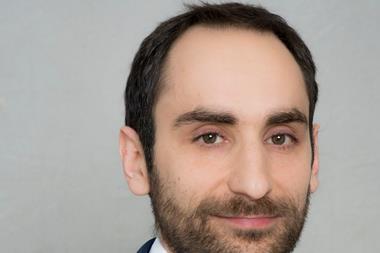Pension funds find themselves between a rock and the hard place as they struggle to provide for ageing populations in a tough investment climate. As a result of this, and of an inheritance of under-funding, retirement savings continue to attract media and public policy attention. Will pension funds be overcome by looming threats or seize the opportunity for change?
For over 15 years, Towers Watson has charted the development of funds through its Global Pension Assets study, focusing on 13 major pension markets, with over $27trn (€21.5trn) of assets. These assets are a record high, but growth has lagged both GDP and defined benefit liabilities.
Over the years we have observed seven long-term trends, some positive, some negative, but all expected to exert influence on the pension agenda over the next few years.
• Pension tension: Workers across Europe have inherited a tangled web of so-called pension ‘promises’. Improved longevity, low interest rates and austerity create a toxic mix for these promises. In response governments and corporations are looking to renegotiate. There are at least two effects: complex problems of inter-generational fairness, and reduced expectations for retirement income. Consequently, unions are focusing on pensions issues, many relying on the state are protesting and politicians are wavering. The increasingly lower-case ‘p’ in promise is creating tension. This is leading to a lack of clarity over future policy direction as politicians seek to second-guess which cuts will leave them most electable. The global financial crisis has brought investment strategy and public policy closer together and the on-going debate about how to pay for pensions likely to do the same.
• Regulation: Despite public policy uncertainty, a higher regulatory burden on pension funds seems a certainty. This will increase compliance costs and the chance of unintended consequences. Examples include bringing more pension assets into Solvency II-type regulatory environments, and the financial services transaction taxes. This combination of more regulation but less clarity on its consequences, is probably another force for concern in the pensions industry.
• Defined benefit (DB) de-risking: During the last decade, in the seven largest pension markets DB assets have grown by 4.6% per annum while defined contribution (DC) assets have grown by 7.9%. The difference reflects not only where new contributions are going but also the different strategies being employed. With greater attention to managing balance sheet volatility, DB schemes continue to de-risk, holding more matching bonds and hedging instruments. This bond focus comes at a time when quantitative easing initiatives have pushed yields close to zero (and real yields even lower), meaning that actuarial valuation methodologies and assumptions will come under renewed scrutiny. Decisions about valuing pensions using yields that build in some mean reversion will have a material impact on reported solvency levels for funds.
• DC technology: While contributions to DC schemes grow and new DC arrangements are developed across Europe, inefficiencies may hamper funds. Small contributions at the individual member level make platform costs relatively high, suggesting this part of the industry may now be ripe for aggregation in an attempt to reduce costs and improve net-of-fee outcomes. Getting the design right is key, especially in the default funds, which receive the majority of contributions. These funds could be improved through greater focus on risk exposures and improving diversity of asset allocation. However, even with good design and low-cost options, successful DC requires an engaged membership. It is here that technology can deliver better tools to aid financial planning for members. When you download music online, the choices highlighted at login are created by algorithms that analyse previous activity. Could parallels in optimisation be applied to DC investment choices?
• Risk management: Although adopting technology-led solutions for DC members has been slow, investors are using more computer processing power to generate risk measures. However, growth in risk measurement has not been accompanied by a better understanding of risk. If anything, the use of risk models has been naïve, leading to over-measurement and under-management of risk. There is a need for better risk governance, a new risk framework that emphasises management, and more long-term planning. To make this happen pension funds need to move risk management higher up the agenda, as well as create a balanced risk-reward culture.
• Governance: Establishing that risk culture is part of governance, and in turbulent times we would expect the opportunities for well-governed funds to outperform their peers to increase. Good governance includes the ruthless pursuit of access to skilled and experienced individuals and organisations. Increasingly, this will mean disturbing the comfort of existing relationships whether by introducing non-executive board members or moving to delegated arrangements such as fiduciary management.
• Value for money: Our calculations suggest that a typical DB pension fund leaks around 0.8% per annum in costs. The majority of this is made up of transaction and manager fees. In these times of turbulent investment markets and historically low yields, we would expect more attention to be paid to this part of the food-chain. There are two sides to this challenge. First, find ways to reduce costs. The change that would have the biggest impact on costs is to trade less. In the investment arena, this value-for-money mantra suggests more replacement of traditional active management with beta and smart-beta products. Funds should also ensure that their managers are reducing costs as effectively as possible by using trading technology and new execution venues. Second, ensure that this cost leakage is money well spent - not wasted. This involves both the selection of investment management and care being taken with respect to fee arrangements, particularly in regard to performance fees. This is to ensure that wherever possible it is genuine skill that is rewarded, while incentives are appropriate and consistent with the desired levels of risk.
In conclusion, pension provision has recently become more expensive and risky. Looking into the future we see little to alleviate this. Public policy debate and increased regulation set against a backdrop of unrest on pensions issues suggest that the pension providers of the future, both private and public, will need to show great adaptability and strong risk management.
Difficult environments often create conditions where the best governed, cost-conscious pension funds can significantly outperform their peers. The difference between tomorrow’s winning and losing pension funds looks set to widen further.


































No comments yet